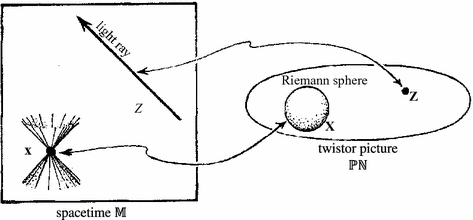A month or two ago I read the new biography of John Conway, Genius at Play, by Siobhan Roberts (whose book about Coxeter I reviewed here). Since then, writing about it has been on my to-do list, but I wasn’t at all sure what to say. In today’s Wall Street Journal Jordan Ellenberg has done a better job of this than I ever could, so I have a place to start: read Jordan’s review.
Probably the first thing to say about the book is that it’s an excellent portrayal of its subject, who is an unusual and well-known figure in the math community. Roberts spent a great deal of time with Conway, traveling with him and getting to know him rather well personally, then very ably turning that experience into a quite readable and enjoyable book. It’s hard to imagine that a better biography of Conway would be possible.
In his review, Jordan crystallized precisely for me why I was having trouble writing about Conway and the book:
Will you like this book? Here’s a simple test. What’s the rule that produces the sequence 1, 11, 21, 1211, 111221, 312211 . . . ?
This is Mr. Conway’s “look-and-say” sequence, so called because each number (after the first) is what you get when you look at the previous number and say it aloud: “one one; two ones; one two, one one; one one, one two, two ones . . .”
If that makes you laugh with surprise, as it did me, you’ll like Mr. Conway, and you’ll like “Genius at Play.” If not, you might want to quit here and go read something improving about the Greek debt crisis.
I’m afraid this didn’t make me laugh with surprise; it seems that I’m immune to the charm of this sort of thing. While there was a lot of Conway’s story I found interesting and which kept me avidly reading, his mathematical interests are very different than mine. Mathematical games make up a big part of his life and career, but the only aspect of this I’ve at any time found appealing was back in high school, when I remember writing a computer program to run the game of Life. I learned from the book that this is Conway’s most famous creation, a fact he’s not entirely happy with.
I also learned that my one personal experience with Conway is widely shared: at lunch with a group here at Columbia he mostly spent the time explaining how to calculate in one’s head what day of the week any date is. Unfortunately I just didn’t enjoy the idea of spending time on this then, and still don’t.
Conway is one of the main figures responsible for an important piece of mathematics, discovering and working out the properties of some of the sporadic finite groups. This isn’t something I’ve ever known much about, and I was quite interested to learn from the book some more about the subject and the history of how it came about.
I can’t think of any other biography that I’ve read that gives such a vivid impression of its subject. In Conway’s case this is somewhat of a mixed bag. He can be a very entertaining character, but his personal flaws are also apparent, with a suicide attempt and several failed marriages testifying to some real problems. Whenever books like this appear, I think one reaction of some mathematicians (not me…) is “is this good for the public portrayal of mathematics and mathematicians?”. Conway’s mixture of genius, highly accessible mathematical discoveries often related to games, and serious issues dealing with the outside world fit rather well with a certain caricature of what mathematicians are like. In my experience with great mathematicians, very few of them other than Conway fit the caricature. While any book about him would likely reinforce the caricature, at least this one gives a very well-written and comprehensive view of its subject.


